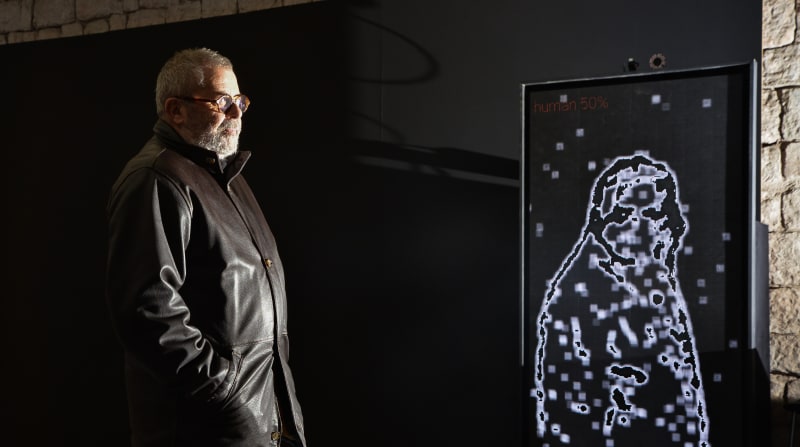Enric Ansesa (b. 1945, Girona, Spain) is a Girona-based visual artist and master colorist whose six-decade practice is grounded in a rigorous exploration of black as both material and metaphysical presence. Working through painting, drawing, and installation, he has developed a visual language in which black is a generative field that holds tension between presence and disappearance, memory and silence, resistance and transcendence.
His practice emerged in the cultural and political atmosphere of post-Franco Catalonia. As a founding member of the Assemblea Democràtica d’Artistes de Girona in the 1970s, he played a role in reasserting freedom of expression through abstraction. One of the pivotal moments in his early career was the commission to redesign the façades of the iconic houses along the Onyar River in Girona. Commissioned by the newly restored Generalitat de Catalunya, the work used vibrant color as a symbol of democratic renewal after dictatorship. This public intervention marked his last engagement with color. Since 1983, black has been the exclusive focus of his visual and philosophical inquiry.
Over the decades, Ansesa’s work has expanded to engage themes of memory, rupture, perception, and spiritual interiority. Series such as Sutures and Black-on-Black explore thresholds, gestures of repair, and the role of silence as a structuring force. His use of layered mark-making, reflective surfaces, and architectural forms creates quiet spaces for contemplation. Works from the Labyrinth of Islam introduce sacred geometry and temporal depth, aligning his abstraction with spiritual traditions of repetition and stillness.
Ansesa continues to work from his studio in Girona, maintaining a practice that is both rooted and far-reaching. His work has been exhibited widely in Spain, Italy, and the United States and is represented in major collections including the Museu d’Art de Girona, the Vila Casas Foundation, and Princeton University Museum. His contributions to the cultural identity of Girona are both public and philosophical, offering a lasting vision of abstraction as a space of presence, resistance, and renewal.

